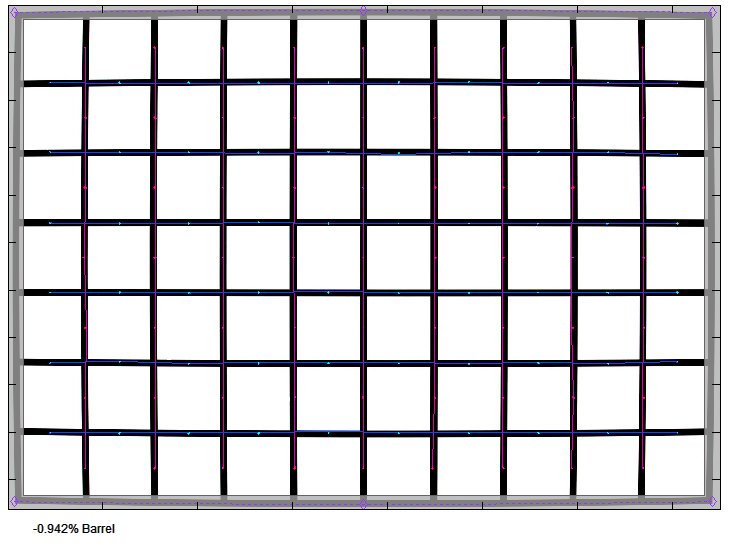|
Canon EF-S 55-250mm f/4-5.6 IS STM - Review / Test Report - Analysis |
|
Lens Reviews -
Canon EOS (APS-C)
|
|
Page 2 of 3

Distortion
The EF-S 55-250mm produces a moderate degree of barrel distortion at 55mm (~0.95%), marginal distortions at 135mm and slight pincushion distortion beyond (~0.8%).
|
Move the mouse cursor over the focal length text marks below to observe the respective distortion
|
| 55mm |
135mm |
200mm |
250mm |

|
Vignetting
Native APS-C lenses tend to produce a fairly high degree of light falloff at max. aperture and this is also true for the Canon EF-S 55-250mm f/4.5-5.6 IS STM. A vignetting of ~1EV (f-stop) will be visible in many scenes. However, beyond the max. aperture it isn't really a problem anymore.

MTF (resolution)
The original EF-S 55-250mm f/4-5.6 IS set a pretty impressive benchmark for tele zoom "kit" lenses. So what about the new STM lens then ? Unsurprisingly the lens performs best at 55mm resulting in very good to excellent figures across the image frame. There's slight deterioration towards longer focal lengths. However, even at 250mm it is capable of delivering a very good to excellent result in the center and good to very good borders & corners. Thus compared to the first version, the wide end is marginally weaker whereas the center quality is marginally better.
The centering quality of the tested sample was Ok.
Please note that the MTF results are not directly comparable across the different systems!
Below is a simplified summary of the formal findings. The chart shows line widths per picture height (LW/PH) which can be taken as a measure for sharpness.
If you want to know more about the MTF50 figures you may check out the corresponding Imatest Explanations
Chromatic Aberrations (CAs)
The level of lateral chromatic aberrations (color shadows at harsh contrast transition) is very low at less than ~1px on the average at the image borders. This is usually not relevant from a real world perspective.

Bokeh (Highlights)
The EF-S 55-250mm f/4-5.6 IS STM has a rather slow max. aperture so we didn't perform the complete bokeh test suite. However, we had a more detailed look at the quality of out-of-focus highlights. They show a slightly onion-like and a bit of an outlining effect - nothing extreme but visible.
 The Canon lens covers the APS-C image frame only. This is sufficient regarding the primary image aspects. However, out-of-focus highlights show a fairly strong "cat's eye" effect near the image borders. Full format lenses used on APS-C DSLRs don't really show this anymore - at least not to this degree.
The Canon lens covers the APS-C image frame only. This is sufficient regarding the primary image aspects. However, out-of-focus highlights show a fairly strong "cat's eye" effect near the image borders. Full format lenses used on APS-C DSLRs don't really show this anymore - at least not to this degree.
 As far as the general quality of the bokeh is concerned - well, we aren't all that impressed actually. The background blur can be rather rough especially when high contrast transitions are part of your scene. Below are two sample crops illustrating the issue.
As far as the general quality of the bokeh is concerned - well, we aren't all that impressed actually. The background blur can be rather rough especially when high contrast transitions are part of your scene. Below are two sample crops illustrating the issue.


|